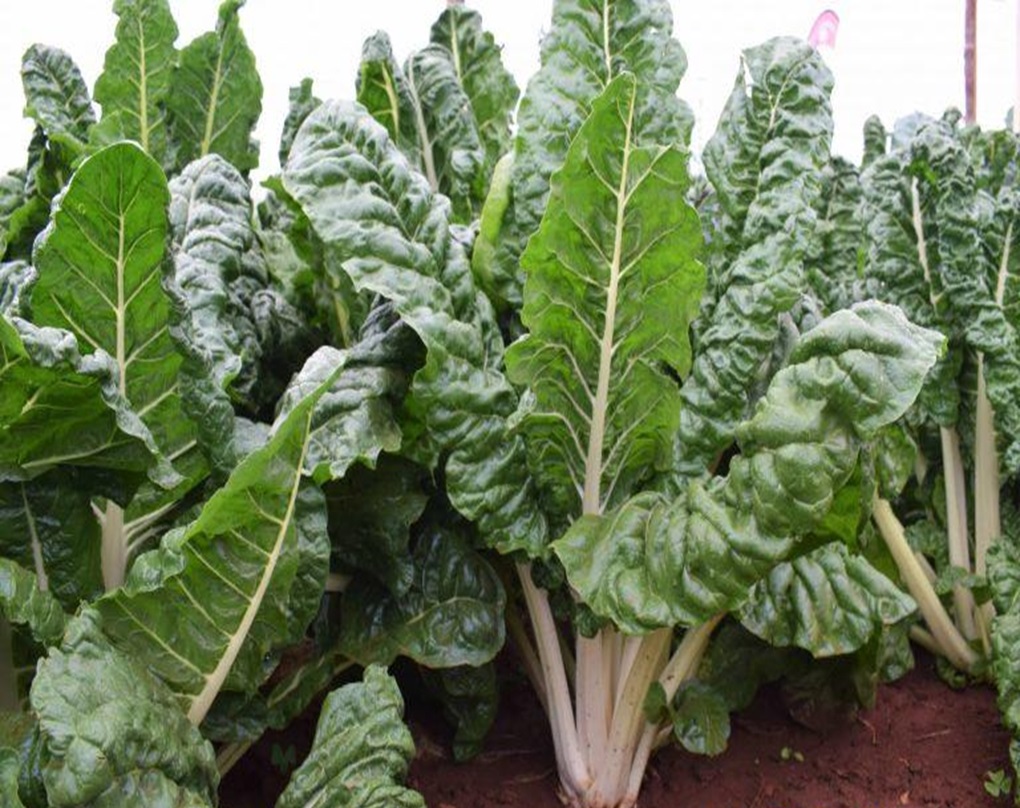 1. BACKGROUND
1. BACKGROUND
Distribution
Spinach (Beta vulgaris) is a vegetable produced in all five districts of Limpopo Province, from garden yard to small and large scale farming for commercial purposes.
Soil and Climatic Requirements
Spinach grows well on a variety of soils, although fertile, sandy loams with a high organic matter content are preferred. Heavier soils can be quite productive if these are well drained and irrigated with care. Spinach is particularly sensitive to saturated soil conditions and to acidity. The optimum soil pH is 6,2 to 6,9. Spinach seeds germinate at 2 °C to 30 °C however, 7 °C to 24 °C is optimum. Seeds will not germinate well in warm weather. Although spinach will grow in temperatures ranging from 5 °C to 24 °C, growth is most rapid at 15 °C to 18 °C.
2. CULTURAL PRACTICES
Planting
The soil will have to be ploughed to a depth of at least 20 cm and then harrowed thoroughly for the land to be flat. The seed is broadcasted or sown in rows on wider beds. Spacing of plants should be 50 to 60 cm between the rows and 15 to 20 cm in- row. This equates to about 160 000+ plants per hectare. Sow seeds 1cm deep either directly or in punnets. Each seed produces two or three seedlings, and it is suggested that these clumps be planted together. Seedlings should be planted or thinned 30cm apart.
Fertilization
Preplant phosphorus application ranges from 56 to 112 kg ha-1. Some growers use broadcasting and others band-placing (5 to 7,5 cm to the side and below the seed row) after beds are lifted but prior to planting. Nitrogen quantities ranges from 90 to 224 kg ha-1, depending on the length of the growing season and market destination. Approximately 56 kg ha-1 is applied before planting, followed by one to three side dressings or water-run applications. In commercial conditions, tissue analysis can be used to evaluate the fertilisation need and the quantities.
Irrigation
Spinach fields are irrigated using overhead systems to ensure the germination of the seed. The very first irrigation is performed immediately after planting, and a second one can follow just before emergence. The first irrigation will be needed to germinate the crop, but several short sprinkler applications are often necessary to prevent soil crusting. Once a uniform stand is established, most growers switch to furrow irrigation system. Continued use of sprinkler irrigation favours infection and the spread of leaf-spot diseases.
Pest and disease control
Spinach leaf miner and aphids are the most frequent pests in spinach. Control can be done by destroying infected crop residue and weeds and the use registered pesticides is also recommended. Application of management strategies for diseases and pests, including crop rotation and spraying with registered insecticide and fungicide is highly recommended.
3. CULTIVAR SELECTION
Fordhook Giant and Green Lucullus, with other varieties like Ruby Red and Flamingo are most popular in South Africa. Variety selection should be determined by the market.
References
https://proagri.co.za/vegetable-crop-production-guide-part-1-spinach/

